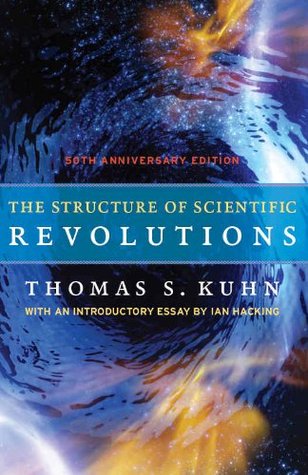More on this book
Community
Kindle Notes & Highlights
Read between
November 21, 2019 - October 9, 2021
the new theory is said to be “neater,” “more suitable,” or “simpler” than the old.
The early versions of most new paradigms are crude. By the time their full aesthetic appeal can be developed, most of the community has been persuaded by other means.
a new candidate for paradigm had to be judged from the start by hard-headed people who examined only relative problem-solving ability, the sciences would experience very few major revolutions.
the issue is which paradigm should in the future guide research on problems many of which neither competitor can yet claim to resolve completely.
have faith that the new paradigm will succeed with the many large problems that confront it, knowing only that the older paradigm has failed with a few.
A decision of that kind can only be made on faith.
Something must make at least a few scientists feel that the new proposal is on the right track, and sometimes it is only personal and inarticulate aesthetic considerations that can do that.
the insulation of the scientific community from society permits the individual scientist to concentrate his attention upon problems that he has good reason to believe he will be able to solve.
the scientist need not choose problems because they urgently need solution and without regard for the tools available to solve them.
If we can learn to substitute evolution-from-what-we-do-know for evolution-toward-what-we-wish-to-know, a number of vexing problems may vanish in the process.
Usually individual scientists, particularly the ablest, will belong to several such groups either simultaneously or in succession.
But people do not see stimuli; our knowledge of them is highly theoretical and abstract.
Instead they have sensations, and we are under no compulsion to suppose that the sensations of our two viewers are the same.
Individuals raised in different societies behave on some occasions as though they saw different things.
both their everyday and most of their scientific world and language are shared.
what the participants in a communication breakdown can do is recognize each other as members of different language communities and then become translators.
men just entering the profession, for they have not yet acquired the special vocabularies and commitments of either group.
as argument piles on argument and as challenge after challenge is successfully met, only blind stubbornness can at the end account for continued resistance.
translate a theory or worldview into one’s own language is not to make it one’s own. For that one must go native, discover that one is thinking and working in, not simply translating out of, a language that was previously foreign.
That transition is not, however, one that an individual may make or refrain from making by deliberation and choice, however good his reasons for wishing to do so. Instead, at some point in the process of learning to translate, he finds that the transition has occurred, that he has slipped into the new language without a decision having been made.
accuracy of prediction, particularly of quantitative prediction; the balance between esoteric and everyday subject matter; and the number of different problems solved.
simplicity, scope, and compatibility with other specialties.
Later scientific theories are better than earlier ones for solving puzzles in the often quite different environments to which they are applied.


